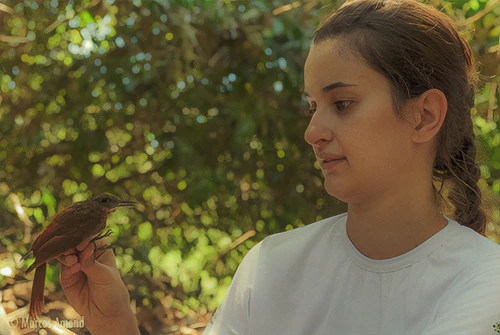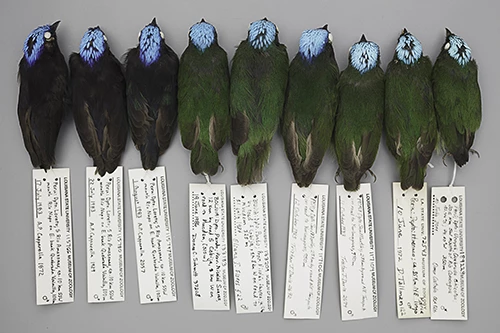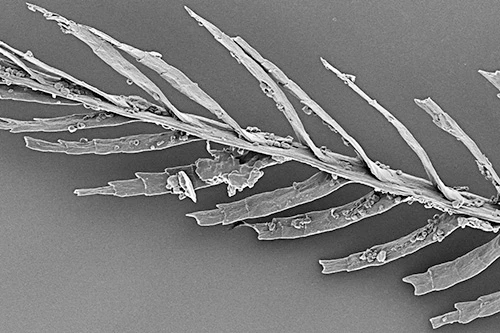
Fieldwork
Amazonian biodiversity
As an Amazonian born and raised, my research focuses on Amazonian fauna and conducted fieldwork in the region.

Museum specimens
Plumage coloration
Differences in plumage coloration is one of the main features utilized in Ornithology to describe and recognize species. Birds are among the most colorful vertebrates and this high diversity occur because birds can produce colors both by pigments (melanin and carotenoids that creates colors like black, grays, browns, reds, orange and yellow) but also structural colors. Some examples of structural colors in plumage include blue, iridescence and super-black. I use spectrometry to measure reflectance from Museum specimens.

Electron Microscopy
Feather structural coloration
I use both Scanning Electron Microscope (SEM) and Transmission Electron Microscope (TEM) to study structures that creates colors. SEM is used to study three dimensions features of specimens such as the feather features that cause the low reflectance in black plumages (super black). These features are in the outer layers of the feathers (e. g. barbule shape). The nano structures that create non-iridescent structural blue plumage are in the medullary layers in feathers barbs. I use TEM to access these structures. TEM requires samples to be embedded in resin and sliced into a very thin slide using a diamond knife.